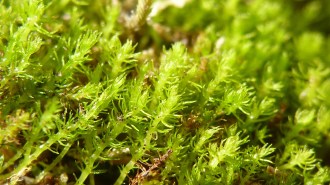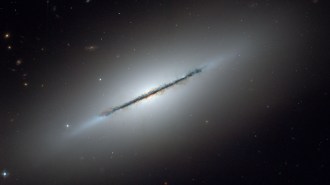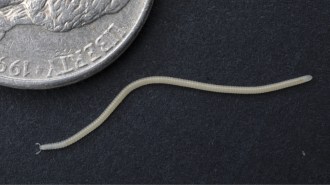News
-
 Astronomy
AstronomyMeet Jane Rigby, senior project scientist for JWST and advocate for LGBTQ+ astronomers
Rigby, senior project scientist for the James Webb Space Telescope, believes being part of the LGBTQ+ community has made her a better astronomer.
-
 Plants
PlantsThe fastest-evolving moss in the world may not adapt to climate change
The genus Takakia has the largest number of fast-evolving genes of any moss, a study finds. But it’s losing ground in the warming Himalayas.
-
 Climate
ClimateExtreme ocean heat off Florida has ebbed. But for marine life, the danger remains
After the recent heat wave, corals have received too much heat too early in the summer, and other sea life could see lingering effects too.
-
 Genetics
GeneticsThe ‘unknome’ catalogs nearly 2 million proteins. Many are mysterious
Scientists have unveiled a new database that emphasizes how much we still don’t know about human proteins and genes.
By Skyler Ware -
 Astronomy
AstronomySpiral galaxies might have been lentil-shaped before becoming starry whirls
By using black holes to track how galaxies merge and grow, an astronomer has proposed an update to the prevailing story of how galaxy shapes evolve.
By Elise Cutts -
 Climate
ClimateExtreme heat taxes the body in many ways. Here’s how
Climate change is bringing longer, humid heat waves and hotter nights. Here's how our bodies try to beat the heat and what happens when they can't.
-
 Health & Medicine
Health & MedicineClimate change puts children’s health at risk now and in the future
Heat waves, wildfires and other climate-related effects on the environment are particularly hard on children’s physical and mental health.
-
 Health & Medicine
Health & MedicineThe thymus withers away after puberty. But it may be important for adults
The thymus is considered somewhat unnecessary in adults. But a new study finds that its removal is associated with heightened risks of death and cancer.
-
 Archaeology
ArchaeologyA child’s ornate necklace highlights ancient farmers’ social complexity
The intricate necklace, reconstructed by researchers, was found on the remains of a child buried about 9,000 years ago in a Middle Eastern village.
By Bruce Bower -
 Paleontology
PaleontologyA colossal ancient whale could be the heaviest animal ever known
Perucetus colossus may have tipped the scales at up to 340 metric tons, but some scientists are skeptical it could have sustained that mass.
By Skyler Ware -
 Climate
ClimateJuly 2023 nailed an unfortunate world record: hottest month ever recorded
Roughly 6.5 billion people, or 4 out of 5 humans, felt the touch of climate change via hotter temperatures during July.
By Nikk Ogasa -
 Animals
AnimalsThe newfound Los Angeles thread millipede is ready for its close-up
Found in Southern California, Illacme socal is the third of its genus found in North America, with the rest of its relatives scattered around the world.